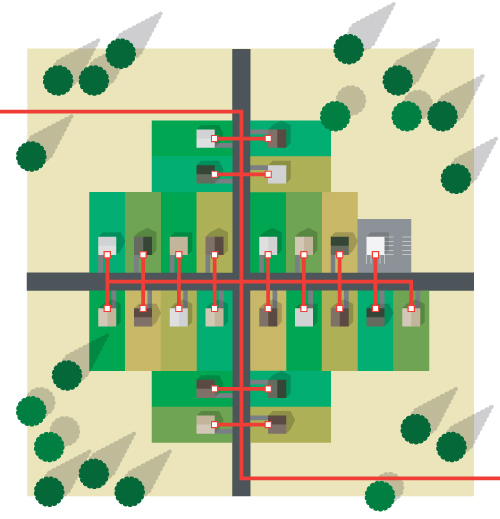 BY PETER BARNES
BY PETER BARNES
A Corvallis ISP connects the underserved.
 BY PETER BARNES
BY PETER BARNES
A cooperative legacy. Even as the country’s dominant telecom and cable players consolidate their hold on urban markets, customers in the mid-Willamette Valley and central coast can still turn to a local provider to get online. “For some of the larger companies, it’s ‘Are you calling from Portland, Ore., or Portland, Maine?’” says PEAK Internet CEO Rick Petersen. “We know where our people live. A little bit more of a personal relationship — they like that extra support they get from us.” That reputation draws on the legacy of PEAK’s owners, a group of rural utility cooperatives originally created to serve a part of Oregon where larger companies wouldn’t venture. “The lion’s share of our profits really go back into our infrastructure and our network,” says Petersen, who declined to disclose PEAK’s revenues. “It’s not the traditional investor-owned scenario.”
Out of the basement. In the early 1990s, a computer science instructor started PEAK — short for Public Electronic Access to Knowledge — in an Oregon State University basement. Its dial-up service spun off a private company that a corporation formed by local utility cooperatives called Casco acquired in 2002, along with several other small Internet service providers. “Then the numbers started to work,” says Petersen. “We had enough cash flow that we could reinvest in the equipment and the routers and infrastructure we needed.” Today about 10,000 people subscribe to PEAK Internet, while the company and its 45 employees support a similar number of customers on a wholesale basis for other ISPs.
The last mile. Many who connect to PEAK do so through CenturyLink, the country’s third-largest telecom, which provides the so-called “last mile” that poses a persistent threat to smaller providers. “They will make it more difficult for us to do that through contractual or regulatory areas over time,” Petersen says. “That’s a real challenge for the entire industry and other companies like us, to really kind of advocate competition and preserve some of those older legacy agreements.” One workaround is a wireless network PEAK built along the I-5 corridor between Eugene and Albany that residential customers can access with a small dish. While Petersen says he’s comfortable with the prospects for growth within a region that barely registers a blip on the earnings of CenturyLink or Comcast, PEAK remains intent on expanding into overlooked corners of that market. “Like we’ve done a lot, we’re going to focus on the underserved areas where the companies aren’t going to make that investment.”
The path forward. It’s unlikely, for example, that Google will install gigabit Internet in the smaller communities PEAK serves. But the Corvallis-based company recently began expanding its own fiberoptic infrastructure, primarily between Corvallis and Lebanon, while consulting with local economic development organizations to identify the places where that capacity could have the biggest business impact. The company has also found a growing niche in managed IT services for local businesses. About six employees maintain and monitor customers’ networks alongside their own at PEAK’s 24/7 operations center. Looking ahead, Petersen says he sees more collaboration with Consumers Power, one of PEAK’s co-op owners, as smart-grid technologies require additional bandwidth to function. He’s also preparing for PEAK’s customers to outsource more and more of their storage and software needs to the cloud. “There needs to be, essentially, bigger pipes, faster speeds, more service,” he says. “We need to grow. We need to expand our networks, expand our capacity — just like we’ve done when we were founded.”

